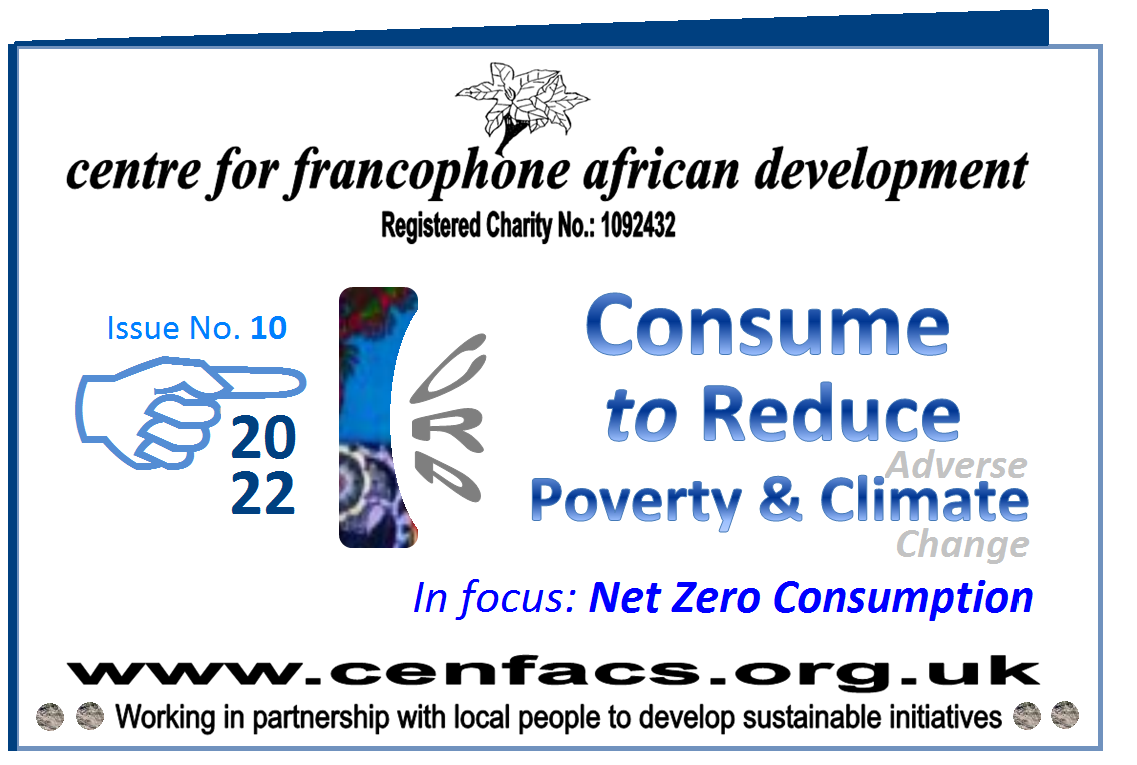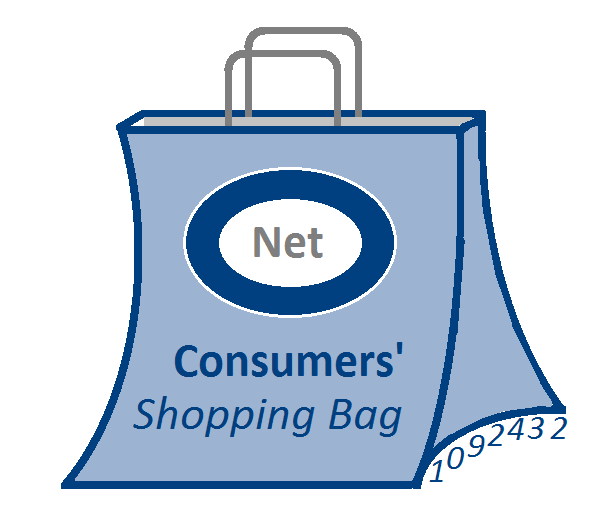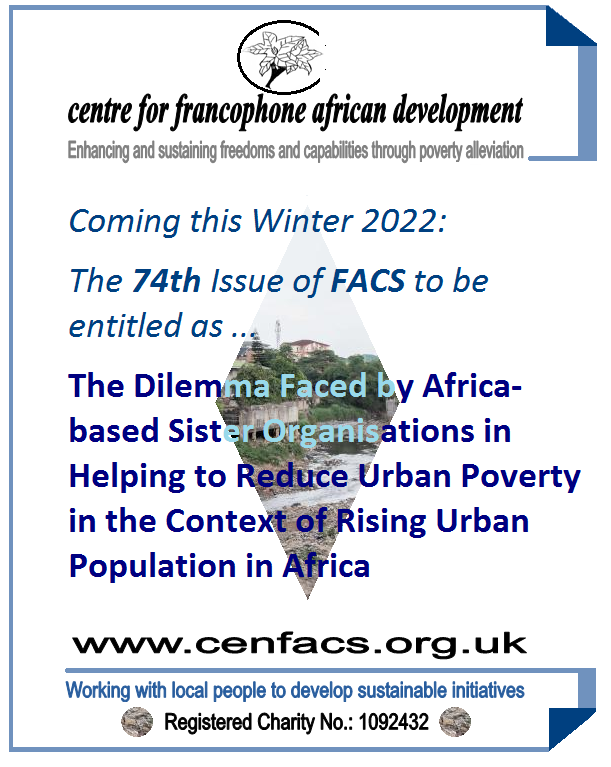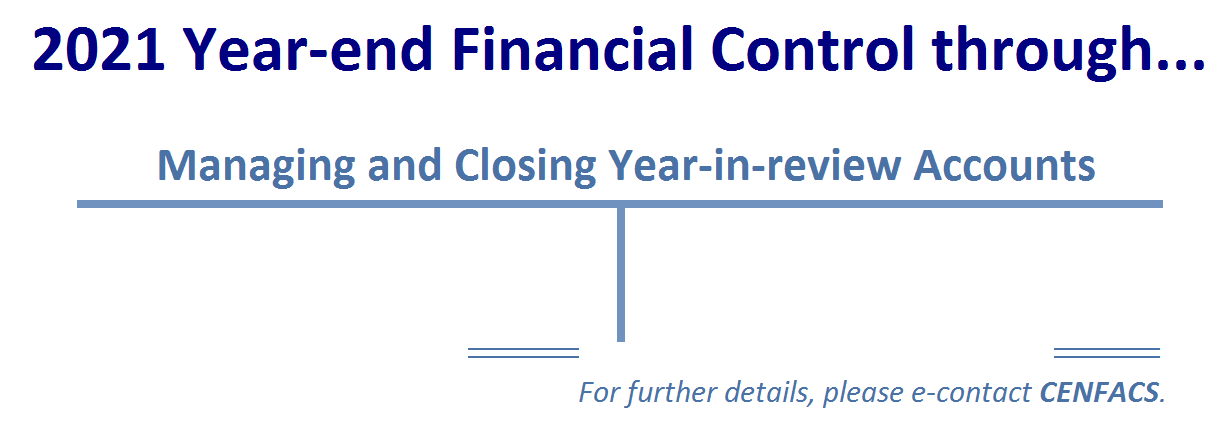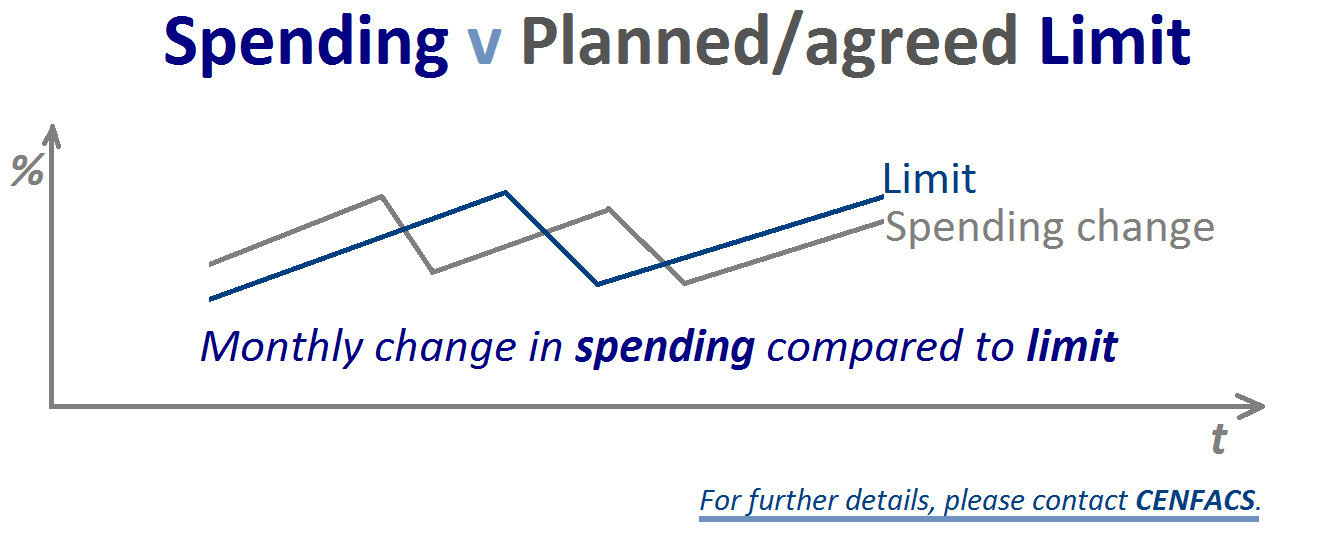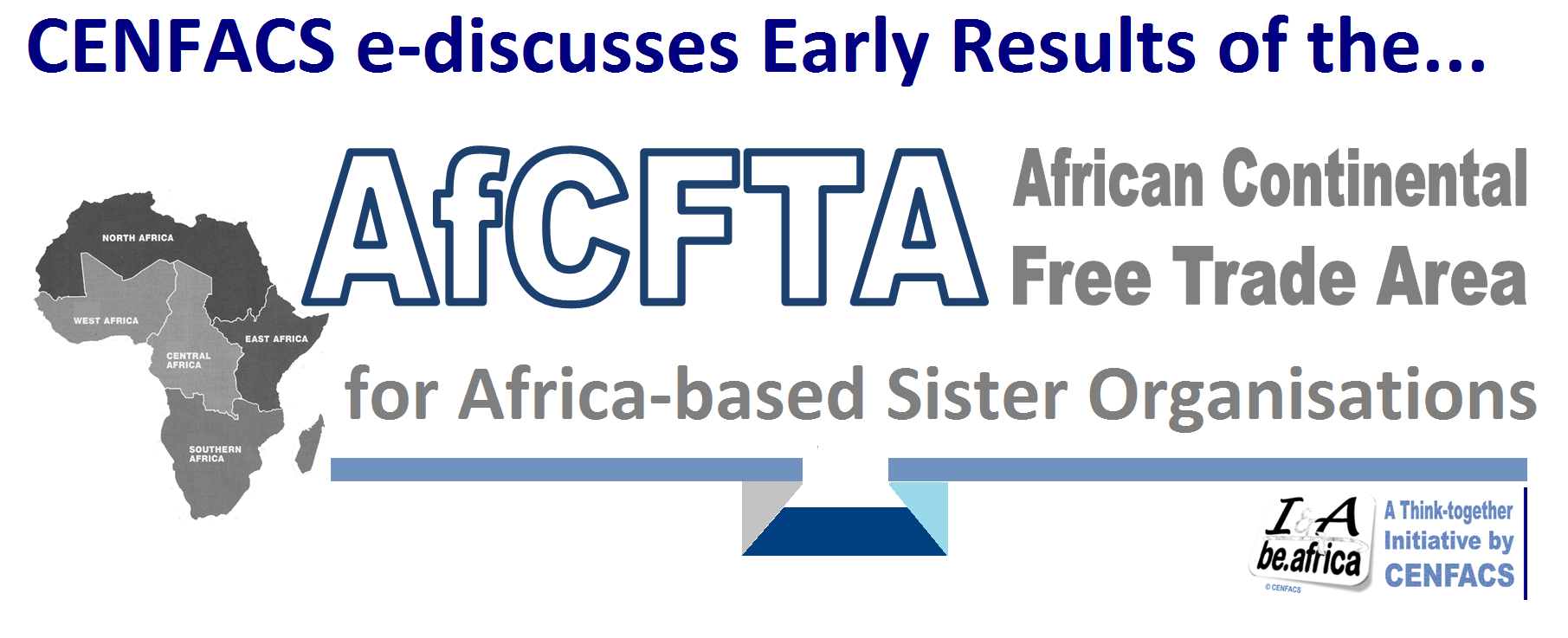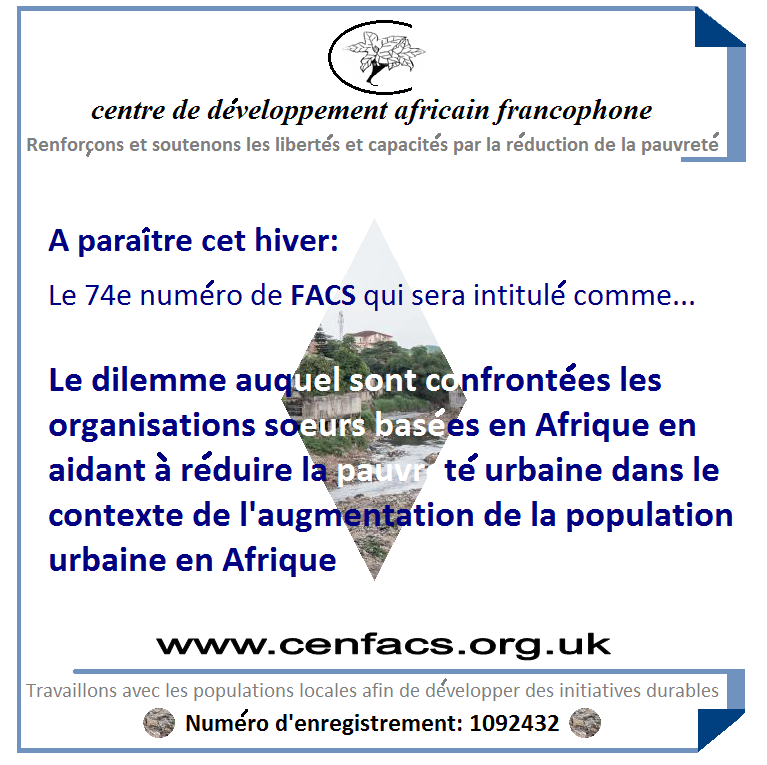Happy New Year and Welcome Back to CENFACS’ Online Diary!
05 January 2022
Post No. 229
The New Year’s Contents
• What is New at the Start of the New Year and What is on this January 2022?
• The 10th Issue of Consume to Reduce Poverty, in Focus: Net Zero Consumption
• Coming up this Winter: The New Year’s and Next Issue of FACS (The 74th Issue) to be entitled as The Dilemma Faced by Africa-based Sister Organisations in Helping to Reduce Urban Poverty in the Context of Rising Urban Population in Africa
… And much more!
The New Year’s Key Messages
• What is New at the Start of the New Year and What is on this January 2022?
New Tool, New Relief & New Hope
We have got the following initiatives to look forward to in this January 2022 at CENFACS:
√ Consume to Reduce Poverty (Issue No. 10) with a Focus on Net Zero Consumption
√ 2021 Year-end Financial Control as a Tool for Poverty Reduction
√ Zero Income Deficit Campaign 2022
√ COVID-19 Campaign in 2022
√ Sustainable energy and Climate neutral Projects (New)
The above mentioned initiatives are amongst the ones we have selected to kick-start 2022.
We shall soon unveil the other selected initiatives making the Season of Light at CENFACS.
• The 10th Issue of CRP (Consume to Reduce Poverty), in focus: Net Zero Consumption
January is the month of Responsible Consumption for CENFACS. The initiative featuring this month is our resource entitled Consume to Reduce Poverty and Climate Change. The 10th Issue of this resource will be on “Net Zero Consumption”. However, before giving the message about the 10th Issue of CRP, let us briefly re-explain what normally happen in January.
• • January as a Month of Responsible Consumption within CENFACS
Some of you are aware that January is our month of Responsible Consumption following CENFACS development calendar. It means that the theme for January is Responsible or Sustainable Consumption and the monthly project carrying this theme is Consume to Reduce Poverty.
It is the month we act against poverty due to the lack of consumption and we deal with measures of poverty reduction through consumption. It is also an opportunity to act to preserve a good relationship between the way in which we consume products on the one hand and the reduction of climate change on the other. In particular, January is a climate reminder month as it is the month during which we raise awareness of the relationships between humans and the nature through sustainable consumption; that is consumption that does not destroy the nature.
This January we will take an extra step by exploring the relationship between humans and net zero consumption; in other words between humans and the need to reduce greenhouse gas emissions and/or ensure that any on-going emissions are balanced by removals.
Consume to Reduce Poverty (CRP) is our users’ New Year supporting information and accompanying booster that focuses on Buying and Consumption elements conducive to the reduction of poverty and hardships. It is indeed a complimentary support to our Autumn Festive Income Boost (FIB) resource.
The FIB is an income-generating resource while CRP brings in a consumption-led look in our fight against poverty. The next Issue (Issue no. 10) of CRP will be on Net Zero Consumption as mentioned above.
For further details about CRP project, go to http://cenfacs.org.uk/services-activities/
• • The 10th Issue of CRP (Consume to Reduce Poverty), in focus: Net Zero Consumption
We will be working on Net Zero Consumption; that is consumption that does not add extra CO₂ emissions to the amount of greenhouse gases in the atmosphere. Net Zero Consumption is an effort that any of the members of our community can make in order to help achieve the global goal of 1.5 degrees Celsius under the Paris Climate Treaty.
To move towards a Net Zero Consumption trajectory, one will need to have Net Zero Consumption strategy and personalised action plans. One needs as well to undertake greenhouse gas assessments and carbon accounting in order to determine the impact of their consumption in terms of CO₂ emissions.
Under the Main Development section of this post, we have given some highlights about the 10th Issue.
• The New Year’s and Next Issue of FACS (The 74th Issue) to be entitled as…
The Dilemma Faced by Africa-based Sister Organisations in Helping to Reduce Urban Poverty in the Context of Rising Urban Population in Africa
How Africa-based Sister Organisations Can Help Reduce Urban Poverty as Urban Population Rises in Africa
The 74th Issue of FACS will deal with two problems as cities or urban places in Africa try to modernise or develop, which are: urban poverty and urban population.
• • Urban population in Africa
The African population has continued to grow, especially in urban cities or capitals. According to the United Nations Human Settlement Programme (1),
“The Urban Population in Africa at Mid-Year by Country was 587,738 thousand in 2020 and will be 824,014 thousand in 2030” (p.305)
The above figure indicates that the urban population in Africa is growing. If this growth continues, there are or could be urban problems. One of these problems is urban poverty. But, what is urban poverty?
• • Urban poverty in Africa
There are many definitions of urban poverty. Amongst these definitions, we have selected the one given by Anna Belén Cano Hila.
Anna Belén Cano Hila (2) argues that
“Urban poverty refers to the set of economic and social difficulties that are found in industrialized cities and that are the result of a combination of processes such as: the establishment of comfortable living standards, the increase of individualism, processes of social fragmentation, and the dualization of the labour market, which translates into social dualization. Urban poverty is seen as a type of poverty with the primary characteristic that it occurs in industrialized societies, according to Rowntree 1901, but also in the Global South, in accordance with Mitlin and Satterthwaite 2012”.
Urban poverty can also happen developing cities like those of Africa. This set of economic and social difficulties or urban poverty has increased with COVID-19 and its socio-economic impacts in those developing cities.
For example, the United Nations Settlement Programme (op. cit.) reports that
“The absolute increase in extreme poverty in Africa has implications for poverty in its urban areas given the rapid pace of urbanization. Urban poverty in many African countries is increasing faster than national poverty” (p. 162)
The same United Nations Settlement Programme also contends that
“Sub-Saharan Africa has the highest incidence of urban poverty globally, with about 23 per cent of the urban population living below the international poverty line and 29 per cent experiencing multidimensional poverty” (p. 162)
The above quotes tell us that Africa has the problems of urban poverty and urban population, which need to be dealt with.
• • Urban poverty and urban population as a dilemma for Africa-based Sister Organisations
If urban population is increasing and urban poverty is rising faster in Africa, how can Africa-based Sister Organisations continue to rise to the challenge of reducing poverty and how can they reduce poverty, particularly urban poverty? Yet, population increase is always seen by many economists including some demographers as a good demographic indicator for labour as factor of production and a contributor to economic growth.
However, in places where there is already a high level of poverty and social deprivations, disproportionally rising population could be itself an impediment to the task of reducing poverty. Rising urban population (mostly if it is mainly made of poor people) can lead to rising demand of poverty reduction as well as poverty reduction goods and services, whereas Africa-based Sister Organisations have very limited resources in order to respond to such high demand of urban poverty reduction. So, it is a dilemma for these organisations. This lets alone other urban problems such as environmental health decay, flooding, insecurity, homelessness, unemployment, etc.
The 74th Issue will look at both urban poverty in the context of rising urban population in the way of doing the most and the best for those in need. It is therefore about how Africa-based Sister Organisations can further reduce poverty and enhance sustainable development while urban population is growing or has the potential to grow, given the resources constraint these organisations have.
More details about this Issue will be given this Winter. However, for those who would like to enquire about it before it appears, please do not hesitate to contact CENFACS.
The New Year’s Extra Messages
• 2021 Year-end Financial Control as a Tool for Poverty Reduction
Year-in-review accounts are one of the financial tools we would like to work and share with our users as we explained in our last post of 2021. They are part of year-end financial control project or exercise which includes income boost and other financial tools making our campaign to reduce and end poverty, particularly income poverty.
For those (individuals, families or households) who need help to manage or close their 2021 year-in-review accounts, they can contact CENFACS prior to the end of 2021-2022 tax year or by the 5th of April 2022.
• Spending Limit Reports
During December 2021, we conducted Structured Activities or Micro-projects under Spending Limit Programme and Scheme. As part of monitoring process, we would be pleased if those who managed to carried out these activities or exercises to report or share their experience regarding them.
Under Spending Limit Scheme, they can report or share on the following:
∝ Elaboration of an action plan for spending limit
∝ Building and understanding of cash flow statements or projections
Under Spending Limit Programme, they can report or share on the following:
∝ Setting up spending threshold
∝ Respecting spending restriction
To report or share your experience, please contact CENFACS.
• Africa-based Sister Organisations (ASOs) in 2022: One Year on with the African Continental Free Trade Area (AfCFTA)
One year on since the AfCFTA became operational, what our ASOs make of it in terms of poverty-relief creation or diversion effects.
It is now one year since the AfCFTA opened for trading activities. Although it is too early to measure the impacts or implications of AfCFTA for poverty reduction (and more in the current situation and conditions of continuing COVID-19 disturbance), it is however possible for ASOs to start to give their first feelings or results. The ASOs can provide their first impressions or feelings regarding the following:
∝ The materialisation of the assumed poverty-relief creation effects deriving from the AfCFTA
∝ Windows of opportunities in terms of market niches of poverty reduction
∝ The possibility to build poverty-relief alliances
∝ The improvement in links with poverty-reduction organisations of similar aims
∝ The delivery of cross-border poverty reduction outcomes
Etc.
To share and or discuss poverty-relief creation or diversion effects of AfCFTA for ASOs, please contact CENFACS.
A nos lecteurs (lectrices) et audiences francophones
Plus de détails sur ce numéro seront donnés cet hiver. Cependant, pour ceux ou celles qui voudraient s’enquérir avant qu’il n’apparaisse, n’hésitez pas de contacter le CENFACS.
The New Year’s Main Development
• The 10th Issue of Consume to Reduce Poverty (CRP)
In Focus: Net Zero Consumption
• • Key highlights, Tips & Hints about the 10th Issue of CRP
• • • What is Net Zero Consumption?
To define net zero consumption, one needs to understand net zero greenhouse gas emissions. The expression ‘net-zero-greenhouse-gas-emissions’ is often shortened to net zero within the climate literature. Within the same literature, there are many definitions of net zero.
In the context of this 10th Issue, we are going to use the definition of net zero provided by the World Economic Forum. According to the World Economic Forum (3),
“The term net zero applies to a situation where global greenhouse gas emissions from human activity are in balance with emissions reductions. At net zero, carbon dioxide emissions are still generated, but an equal amount of carbon dioxide is removed from the atmosphere as is released into it, resulting in zero increase in net emissions”.
From this definition, one can try to define net zero consumption. Net zero consumption is the types of consumption (whether the consumption is about consumer goods or other goods or even services) that do not add extra emissions of carbon dioxide to the amount of greenhouse gases in the atmosphere. This matters at all levels of consumption, including at the level of poor consumers (like some of our users) even if their consumption can generate only a tiny amount of emissions.
• • • Going Net Zero in your Shopping Basket
Using the internet, e-mail, social networks and other communication technologies; it is possible to get enough information about products and services that meet the requirements of net zero consumption while reducing poverty at the same time.
It is conceivable for consumers including the poor ones to live a net zero life by shopping and filling up their shopping basket with goods or products that meet net zero requirements. It is as well possible to find resources and websites that compare and contrast these kinds of products, services and prices. People can then choose products and services that are good value for net zero consumption and add them to their online shopping basket.
• • • Reducing Poverty through a Net Zero Journey
Individual and family strategies of reducing the state of having little or no money or even no material possessions can be implemented via net zero consumption or use. Individuals and families (including the poor ones) can consume net zero products and services that do not add extra emissions, but that help to reduce or even end poverty. People and families can leapfrog poverty reduction to net zero consumption.
• • • Net Zero Consumption and Circular Economic Model
Embracing the recipes of the economic model that decouples (bad) exploitation of natural resources and the desire to meet human needs and wants (circular economy), can help improve consumer behaviour via net zero consumption. It is said that all processes create waste and sometimes emissions. However, the circular economic model helps to direct consumption towards what is essential to maintain human life; in doing so it benefits humans to fix, reuse, reduce and save resources through their consumption.
Briefly, the model can contribute to less production and consumption of products and services that are the result of extra CO2 emissions.
• • • Net Zero Consumption and the Climate Economy
The process of using resources without adding extra amount of greenhouse gas emissions in the atmosphere can goes hand in hand with an organised system for the production, distribution and use of goods and services that takes into account the changing weather conditions. In other words, consuming net zero products and resources can help reduce adverse climate change.
As climate economy continues to establish itself as an economy for the future, it can bring new climate educational opportunities, economic savings and improved well-being for the poor. These attributes of the Established Climate Economy can help them consume goods and services that are net zero and non-polluting.
• • • Net Zero Consumption and Climate Change
Maybe enough has been said about the impacts of changing climate. If not, then one area of work could be for humans to rethink about how their net zero consumption can help. Their net zero consumption can help to adapt and mitigate the negative effects of climate change. The consumption of net zero products and services would help the health and wealth of the environment and the nature on which we all depend.
• • • Net Zero Consumption and COVID-19
There is a body of scientific explanations about origins of the outbreak of coronavirus pandemic, which indicate that the coronavirus pandemic is a novel zoonotic pathogen or disease. From this body, it is possible to argue that consuming net zero products and services will help to reduce human induced impacts of climate change and global warming; impacts that probably led to the outbreak of the coronavirus pandemic and other pandemics.
• • • Poor Consumers and their Affordability of Net Zero Goods
Not everybody can afford to buy net zero goods and services, especially many poor consumers who may even lack their access. Since the first COVID-19 lockdown, many low income people and families are struggling to access even essential goods and commodities. The asymmetry in the distributional effects of the lockdowns has denied to many of them even the access to essential consumption goods. Their expenses budget has gone up with the new coronavirus-related health items. This situation does not make easy for them to access net zero consumption even if these could be affordable.
Giving them advisory support in terms how to increase their income, to make some changes in their expenses budget and find affordable net zero consumption goods and services should be a priority amongst other ones. In this respect, a list of where to find affordable net zero consumption goods in this CRP resource could be handy for them to go net zero for their consumption.
• • • Net Zero Consumption Good Practices within the Community
Despite the problem of affordability of net zero goods for low income poor people and families, there are nonetheless net zero consumption good practices within our community. To back up these practices, the10th Issue of CRP highlights some cases of net zero consumption good initiatives undertaken by the CENFACS Community that underpins net zero consumption accounts as part of every day’s human life.
In this respect, those who have cases of net zero consumption practices and who may find them worthwhile to share and be added to this issue of CRP, they can let CENFACS know.
• • • Demonstrative Projects of Net Zero Consumer Goods and Services
In net zero consumption economy, every shopper can demonstrate the ability to follow the rules of net-zero consuming world. In those circumstances, there could be those consumers who do more by taking a proactive action to net-zero consume.
Likewise, there could be local projects (for example, local artists, local soap and face mask makers to support local net zero economy) that could display demonstrative talents and skills in promoting net zero consumption goods, services and habits as a way of living rather than as an accident.
For those members of our community who have developed this kind of demonstrative projects of net zero consumption products and services, it could be a good idea to let us know so that we can add them to this CRP resource.
• • • Barriers to Achieve Net Zero Consumption Goals
There could be some handicaps for people and families to achieve net zero consumption goals. One of the barriers is the lack of income that extremely poor people experience that could push them out of reaching net-zero consumption products. Despite that in charitable world and economy in which no one and no place are left behind, there could be still access for everybody and everyplace to net-zero consumption goods and services.
However, people and families do not like net-zero consumption to happen to them in this way since they would like to work and pay for their net-zero consumption. Because of the barriers they face in finding opportunity to work and earn decent income, their prospect for meeting their net-zero consumption goals could become remote.
As part of tackling these barriers, the current resource provides some leads in terms of print and online resources that users can further explore in order to respond to some of their net-zero consumption problems.
• • • Budgeting for Net Zero Consumption
It is a good idea for users to budget for net zero consumer goods and services as part of the overall of household budget. Users can do or learn to do their own carbon accounting. This kind of preparation in terms of financial statements for any planned incomes and expenses for a particular period can help to maximise the clean use of resources and reduce spending in items able to gear towards greenhouse gas emissions in terms of what is polluting and non-polluting consumption. It can as well provide alternative to net-zero consumption to reduce poverty and hardships due to pollution or CO2 emissions.
• • • Net Zero Consumption Indication on Products for Verification, Identity and Authenticity
It is a good idea for any consumer, rich or poor, to check net-zero features on their buys and other specifications as well as read other people’s testimonies, reviews or comments about it. In this respect, selling the positive idea of net-zero consumption could be helpful for net-zero consumers.
• • • Net Zero Security and Guarantee
When buying net-zero consumer products and services (whether using online or a physical store), one needs to check, compare and contrast products, terms and conditions of business, buying terms, prices, etc. There is a need to check as well guarantees and safety policies for net-zero features in terms of the coronavirus pandemic.
If you are buying online, before you sign up, add to your net-zero consumer shopping basket and purchase an item; you need to read, discuss and check what you are agreeing on. You may even take more precautions when selecting items, filling up buying forms to enter your personal, financial information and sensitive details. Make sure that your online shopping does not limit itself to tick or cross out boxes only.
You should also be aware of scams, spams as well as illegal and malicious practices. For own online security, use the e-safety tools and advice.
• • • Looking for Help and Support
For those users who would like to dive into net zero consumption, we can provide them with online and print resources relating to net zero consumption. There is a lot of online resources and websites they can sign up and receive advice on the following matters: net zero strategy, action plans, greenhouse gas assessments, carbon accounting, etc.
To support Net Zero and Responsible Consumption and get the full 2022 Issue of Consume to Reduce Poverty and Climate Change, please contact CENFACS.
_________
References
(1) United Nations Human Settlement Programme (2020), World Cities Report 2020: The Value of Sustainable Urbanisation, UN-Habitat, 2020
(https://unhabitat.org/sites/default/files/2020/10wcr_2020_report.pdf)
(2) Anna Belén Cano Hila (2020): Urban Poverty – Urban Studies – Oxford Bibliographies at…
https://www.oxfordbibliographies.com/view/document/obo-9780190922481/…
Cano, Ana Belén. “Urban Poverty.” In The Wiley Blackwell Encyclopedia of Urban and Regional Studies. Edited by A. M. Orum, 1–7. Hoboken, NJ: Wiley-Blackwell, 2019.
(3) World Economic Forum at… https://www.weforum.org/agenda/2021/11/net-zero-emissions-cop26-climate-change/
_________
Help CENFACS keep the Poverty Relief work going this year.
We do our work on a very small budget and on a voluntary basis. Making a donation will show us you value our work and support CENFACS’ work, which is currently offered as a free service.
One could consider a recurring donation to CENFACS in the future or as a New Year resolution.
Donate to support CENFACS!
FOR ONLY £1, YOU CAN SUPPORT CENFACS AND CENFACS’ PROJECTS, JUST GO TO :Support Causes – (cenfacs.org.uk)
Thank you for visiting CENFACS website and reading this post.
Thank you as well to those who made or make comments about our weekly posts.
We look forward to receiving your regular visits and continuing support throughout 2022 and beyond.
With many thanks.
